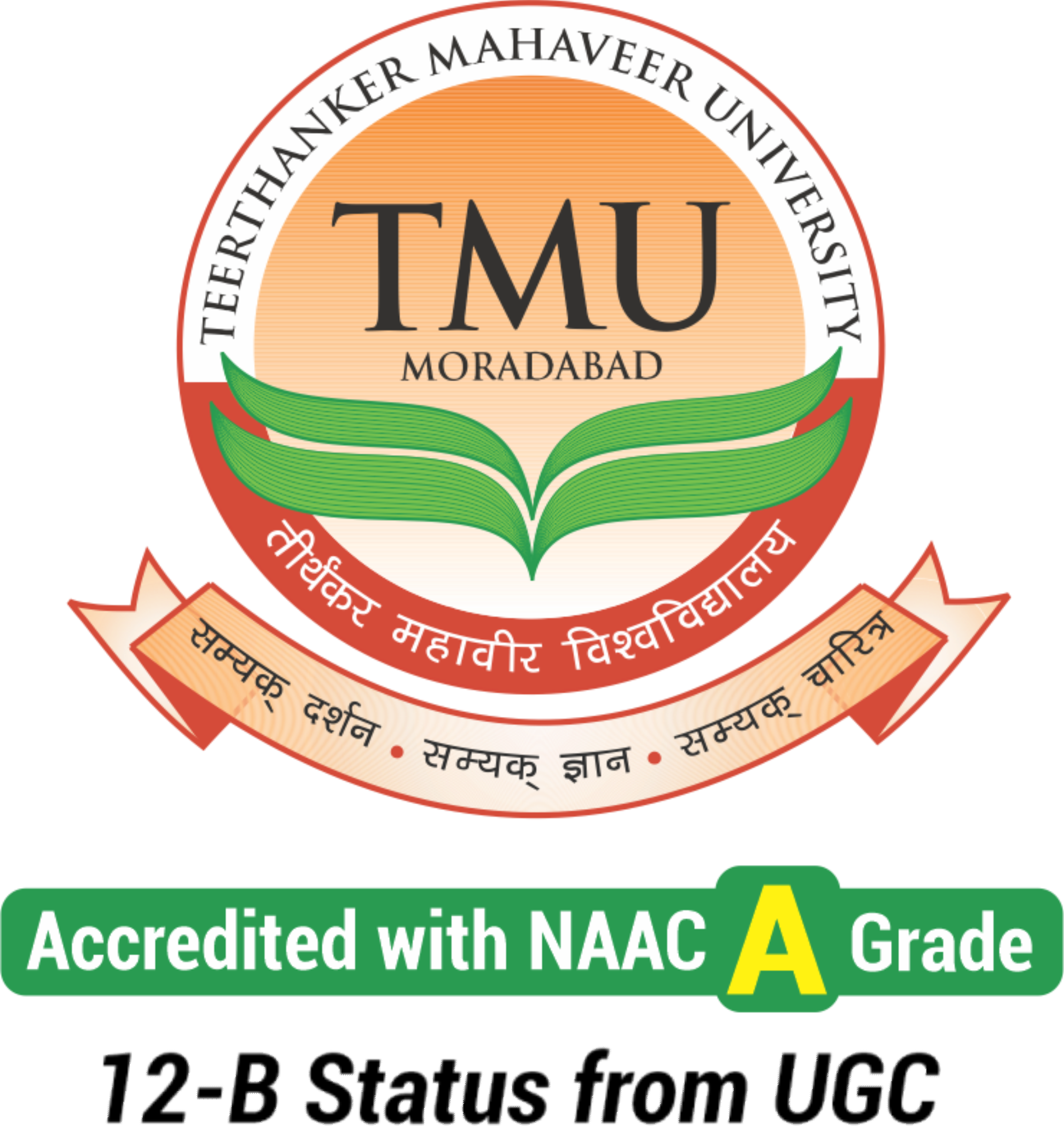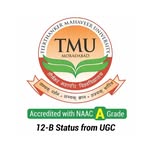MBA vs PGDM: Differences, Eligibility, Jobs, Salary
Table of Contents
When you're aiming for a career in management, one of the first questions is 'MBA or PGDM? The world of business education can feel like a maze. You've probably heard both terms thrown around by friends, colleagues, or mentors. But what's the real difference between an MBA and a PGDM?
In India, this distinction isn't just academic—it's about your career path, job prospects, and even how much you could earn. With so many colleges, B-schools, and universities offering either or both, it’s easy to get overwhelmed.
The aim here is to break things down clearly. Whether you're a fresh graduate planning your next move or a working professional looking to upskill, understanding the contrast between an MBA and PGDM is crucial. We'll dive deep into what each program is, they differ, what kind of jobs they land you and how much money you can expect to make after each.
What is an MBA?
MBA stands for Master of Business Administration. It’s a postgraduate degree offered by universities and colleges that are affiliated with recognised institutions, especially those governed by the University Grants Commission (UGC) in India.
Key Features of an MBA:
- Academic Nature: An MBA is more academic and theory-focused. While it does include practical components like internships and projects, it is typically grounded in classroom learning and research-based coursework.
- Duration: The standard MBA program is two years long, split into four semesters. However, there are also accelerated one-year versions available for professionals with prior experience.
- Affiliation: Only universities or institutions affiliated with universities can award MBA degrees. For instance, IIMS didn’t offer MBAs until recently when they were granted the authority to confer degrees.
- Structure: MBA programs follow a university curriculum, which may not change frequently due to regulatory approval cycles. This arrangement can sometimes make the content less dynamic.
Who Should Opt for an MBA?
If you're someone who prefers a structured academic environment and is interested in possibly pursuing further studies like a PhD later, an MBA makes more sense. It also suits those looking for international recognition, as the term “MBA” is globally understood and accepted.
Teerthanker Mahaveer University
Apply for Admission
Click Here To Apply for Admission
What is a PGDM?
PGDM stands for Post Graduate Diploma in Management. It’s a diploma course, but don’t let the term “diploma” mislead you. Some of the top B-schools in India, including the prestigious IIMS (before the 2017 IIM Act), XLRI, and SPJIMR, offer PGDM programs.
Key Features of a PGDM:
- Industry-Oriented: PGDM courses are known for being updated, flexible, and aligned with current industry trends. Institutions have the autonomy to tweak and redesign the curriculum based on what's relevant in the job market.
- Duration: Like the MBA, the PGDM is generally a two-year full-time program. Some institutes also offer a one-year executive PGDMS for working professionals.
- Autonomous Status: PGDM is awarded by autonomous institutions that are recognised by the All India Council for Technical Education (AICTE) but are not affiliated with any university.
- Curriculum: Because there’s no university board involved, PGDM programs can be more agile. Courses often include workshops, live projects, and simulations to keep students updated with the latest business trends.
Who Should Opt for PGDM?
A PGDM might be a better fit for you if you're a driven individual who prioritises practical learning and is eager to enter the corporate world with prepared skills. It’s also a viable choice if you're targeting a career in a specific niche like fintech, data analytics, or operations.
Key Differences Between MBA and PGDM
Choosing between an MBA and PGDM isn't just about labels—there are real differences that can impact your career trajectory. Let’s break them down:
Curriculum
- MBA: Follows a fixed curriculum laid out by the university. It may be slightly dated because updates require bureaucratic approval.
- PGDM: The Curriculum is more dynamic and frequently updated to match industry requirements. You’ll likely get exposure to current market tools, case studies, and real-world problems.
Affiliation and Accreditation
- MBA: Affiliated with UGC-recognised universities.
- PGDM: Recognised by AICTE, awarded by autonomous B-schools.
Degree vs Diploma
- MBA: Offers a degree, which has greater recognition in academic settings and may be a requirement for some government positions.
- PGDM: Offers a diploma, though it can still be equivalent in the eyes of corporate employers, especially if offered by a reputed institution.
Teaching Approach
- MBA: More academic and theory-oriented.
- PGDM: Focuses more on practical knowledge, experiential learning, and skill-based training.
Cost of Study
- MBA: Usually more affordable, especially if offered by government-funded universities.
- PGDM: Typically more expensive due to the infrastructure, industry exposure, and facilities offered by private autonomous institutes.
The legal difference between MBA and PGDM:
Both the bodies (AICTE and UGC) are formed by the Act of Parliament for the cause of higher education. So the programs approved by these bodies have equivalent legal acceptance. That means PGDM or MBA both are postgraduate programs and have the same legal equivalence as for Government jobs or enrolling for a Ph.D. is concerned. Some universities, while enrolling PGDM students for Ph.D., may demand an equivalence certificate that can be easily obtained from AIU or the Association of Indian Universities.
Eligibility Criteria for MBA
Getting into an MBA program isn't just about applying—it’s about meeting specific requirements that showcase your academic background, your analytical skills, and often, your leadership potential. Let’s break down what you need to get into a good MBA program in India.
Academic Qualifications
Most MBA programs require you to hold a bachelor’s degree in any discipline from a recognised university. You typically need at least 50% aggregate marks (45% for reserved categories). Your undergraduate major doesn’t matter much—you could be an engineer, a commerce graduate, or even someone with a background in the arts.
Entrance Exams
- CAT (Common Admission Test) – For IIMS and many other top B-schools
- MAT (Management Aptitude Test)
- XAT (Xavier Aptitude Test)
- CMAT (Common Management Admission Test)
- GMAT – Preferred for international MBA programs and some Indian B-schools
Some universities also conduct their entrance tests. For example, SNAP for Symbiosis or NMAT for NMIMS.
Work Experience (if applicable)
Though most MBA programs welcome freshmen, having 1–3 years of work experience can be a strong advantage, especially in executive MBA programs. It also helps you grasp real-world applications of what you’ll learn in the classroom.
So, if you’re someone with work experience and leadership aspirations, you might even want to look into part-time or executive MBA, which are specially crafted for working professionals.
Eligibility Criteria for PGDM
While the eligibility for PGDM is quite similar to that of MBA, there are subtle differences in the process and expectations, especially since PGDM is offered by autonomous institutes.
Academic Qualifications
To pursue a PGDM, you must have a graduate degree in any stream from a recognised university, just like with an MBA. Again, the minimum percentage is usually 50% for general candidates and around 45% for SC/ST or reserved categories.
Entrance Exams
PGDM programs mostly accept the same entrance exams as MBA programs, but here’s where it gets interesting—they sometimes prefer CAT or XAT scores, especially the more elite B-schools like XLRI, SPJIMR, and MDI.
Common exams include:
- CAT
- XAT
- GMAT
- CMAT
- MAT
- ATMA
Each institute will have its cut-off scores and selection criteria, so it’s smart to check the individual school’s website.
Work Experience (if applicable)
While not mandatory, work experience adds serious weight to your PGDM application. Many PGDM programs are known for accepting candidates with 1–5 years of experience, especially in executive PGDMS or specialised courses in leadership, analytics, or marketing.
Bonus tip: Unlike MBA programs bound by university regulations, PGDM admission processes often include group discussions, written ability tests, and personal interviews as part of the selection.
Career Opportunities After an MBA
An MBA is more than just a fancy title—it’s a gateway to the corporate world, entrepreneurship, and even high-paying government roles. The diversity of job opportunities is one of the biggest reasons people invest in an MBA.
Common Job Profiles
- Business Analyst
- Marketing Manager
- HR Manager
- Operations Manager
- Financial Analyst
- Product Manager
- Consultant
Some even branch out into fields like data analytics, digital marketing, or international business, depending on their specialisation.
Industries Hiring MBA Graduates
MBA grads are in demand across nearly every industry:
- Banking & Finance: Roles in investment banking, equity research, and wealth management.
- FMCG and Retail: Marketing and supply chain roles.
- Consulting Firms: Strategy, operations, and management consulting.
- Tech & Startups: Product management, growth hacking, and more.
- Healthcare & Pharma: Administrative and operational roles.
Career Growth
The beauty of an MBA is its long-term value. Starting as a management trainee, you could progress to a senior manager role or even a VP role within 5–7 years. If you’ve got leadership in your DNA, an MBA gives you the map to get to the top.
For ambitious individuals, an MBA can serve as a foundation for positions such as CEO, COO, or even the creation of their startup.
Career Opportunities After PGDM
PGDM graduates excel in career growth and job diversity. The industry-integrated learning model often enables PGDM graduates to excel immediately.
Common Job Profiles
- Management Consultant
- Sales & Marketing Executive
- Data Analyst
- Project Manager
- Investment Banker
- Retail Manager
- Digital Marketing Manager
A lot of PGDM programs also offer dual specialisations, which makes candidates versatile and more attractive to recruiters.
Industries Hiring PGDM Graduates
- E-commerce and Tech Startups: Fast-paced roles in business development, marketing, and operations.
- Consulting Firms: Process optimisation, client engagement, and implementation projects.
- Manufacturing and Logistics: Supply chain management, lean systems.
- Media & Entertainment: Marketing, talent management, and campaign strategy.
Career Growth
PGDM courses equip you with the kind of skills that employers crave—problem-solving, leadership, communication, and agility. That’s why many PGDM holders find themselves fast-tracked to mid-level roles within just 2–3 years of graduating.
And since PGDM programs often involve internships, corporate projects, and live case studies, you're already familiar with how businesses operate, making you a valuable asset from day one.
Salary Comparison: MBA vs PGDM
Let’s be honest—one of the biggest motivators behind pursuing any business program is the salary potential. So, how do MBA and PGDM compare in terms of ROI?
Entry-Level Salaries
- MBA Graduates: ₹5 to ₹8 LPA on average. Top IIMS or global MBAS can fetch ₹20+ LPA.
- PGDM Graduates: ₹6 to ₹10 LPA on average. Again, tier-1 schools like XLRI or MDI can offer packages of ₹20+ LPA.
The salary you get also depends on your specialisation. For instance, marketing may offer less initially than finance or analytics, but growth potential varies.
Mid-Level and Senior Positions
After 5–10 years, the pay scale jumps significantly:
- MBA: ₹15 to ₹35 LPA
- PGDM: ₹18 to ₹40 LPA
This range includes bonuses, stock options, and incentives, especially for those in strategic roles or leadership positions.
Impact of Institution Reputation
Let’s be real: where you study makes a huge difference.
- Top IIMS, XLRI, SPJIMR, ISB: Sky-high packages, even international placements.
- Tier-2/3 Colleges: Decent starting salaries, but you’ll need to hustle more to climb the ladder.
Also, placement support plays a huge role. Many PGDM institutions are renowned for their robust industry networks and placement cells, which can significantly increase your chances of success.
Comparison of MBA and PGDM
Here’s a quick side-by-side comparison to help you visually understand how MBA and PGDM differ across various parameters:
| Factor | MBA | PGDM |
| Full Form | Master of Business Administration | Post Graduate Diploma in Management |
| Awarded By | Universities (UGC Recognised) | Autonomous institutes (AICTE Approved) |
| Degree/Diploma | Degree | Diploma |
| Curriculum | Fixed, university-governed | Flexible, industry-oriented |
| Entrance Exams | CAT, XAT, MAT, CMAT, GMAT, state exams | CAT, XAT, GMAT, MAT, CMAT |
| Duration | 2 Years | 2 Years (1 Year for Executive PGDM) |
| Focus Area | Theoretical knowledge, academic research | Practical exposure, skill development |
| Cost of Study | Generally lower | Generally higher |
| Top Institutes | IIMS (recently), FMS, Delhi University | XLRI, SPJIMR, MDI, NMIMS |
| Recognition | Widely recognised both nationally and internationally | Increasing global acceptance |
| Ideal For | Those seeking academic careers or government jobs | Those seeking quick corporate roles & industry exposure |
| Global Recognition | High, especially from top universities | Depends on the institute |
| Placements | Strong in reputed colleges | Excellent in top B-schools with industry tie-ups |
Which is Better: MBA or PGDM?
Now, the crucial question arises: should you pursue an MBA or PGDM?
Based on Career Goals
If your career goal involves academic research, government roles, or long-term plans like a PhD, an MBA might be a better fit since it awards a degree that aligns with those paths.
But if you're someone who wants to jump right into startups, tech roles, or fast-moving companies, a PGDM—with its practical curriculum and industry-focused learning—can be transformative.
Based on Industry Preferences
Let’s break it down further:
- Consulting, Finance, Marketing: Both MBA and PGDM are valued here. Your performance, internship experience, and school reputation matter more than the degree.
- Tech/Product Management: PGDMS with specialisations in analytics or operations has an edge because of practical training.
- Public Sector/Government Jobs: An MBA (degree) is better aligned due to eligibility criteria in many public sector units (PSUS) or academic institutions.
Based on Long-Term Value
This one’s subjective. A degree (MBA) might have more long-term recognition, especially if you’re planning to work abroad or shift careers later. A PGDM offers faster ROI when completed at a top B-school with strong industry connections.
The institute, your networking skills, and how you leverage your education will ultimately determine your success. Don’t choose based on labels—choose based on fit.
Top Institutions Offering MBA and PGDM
If you’ve made it this far, you’re probably wondering, Where can I study this? Here's a list of top institutions in India that are known for excellence in MBA and PGDM education.
Top MBA Colleges in India
- IIM Ahmedabad, Bangalore, Calcutta – Now offering MBAS post IIM Act
- Faculty of Management Studies (FMS), Delhi
- Indian Institute of Foreign Trade (IIFT)
- Jamnalal Bajaj Institute of Management Studies (JBIMS)
- Symbiosis Institute of Business Management (SIBM), Pune
- Department of Management Studies (DoMS), IITs
- Narsee Monjee Institute of Management Studies (NMIMS) – Offers MBA through a deemed university status
- Teerthanker Mahaveer University, Moradabad
Top PGDM Colleges in India
- XLRI Jamshedpur
- SP Jain Institute of Management and Research (SPJIMR)
- Management Development Institute (MDI), Gurgaon
- Institute of Management Technology (IMT), Ghaziabad
- T. A. Pai Management Institute (TAPMI)
- International Management Institute (IMI), Delhi
- FORE School of Management, Delhi
When choosing an institution, look at placements, alumni network, industry exposure, faculty, and curriculum rather than just the brand name.
Conclusion
MBA or PGDM—it’s not a one-size-fits-all decision. Both paths are prestigious, well-respected, and can lead to fantastic careers in the business world. What truly matters is not just what you study; it's also where you study and how you apply what you've learnt.
If you're driven, ready to hustle, and willing to learn, either program can put you on the path to leadership, innovation, and impact. Remember, it's your skills and experience that truly matter, not the title on your resume.
So, whether you go for an MBA or a PGDM, make sure it aligns with your passion, your personality, and your professional goals. Success will follow when you choose the right fit.
FAQs
Q1: Which is more valuable, an MBA or a PGDM?
Ans: Value depends on your career goals. For academic or public sector roles, an MBA may offer more recognition. For corporate roles and practical learning, PGDM has an edge.
Q2: Can PGDM be equivalent to an MBA?
Ans: Yes, if the PGDM is from an AIU-recognised institute, it's considered equivalent to an MBA for job applications and further education.
Q3: Is PGDM accepted internationally?
Ans: Global acceptance exists for some PGDMs, particularly those from reputable institutions. However, an MBA degree generally has wider international acceptance.
Q4: Do all PGDM courses offer placements?
Ans: No, placement quality varies by institute. Reputed B-schools with industry links generally have robust placement records.
Q5. What should I choose: MBA or PGDM?
Ans: Choose based on your goals—MBA if you want a degree with an academic focus; PGDM if you seek faster industry integration and hands-on learning.















